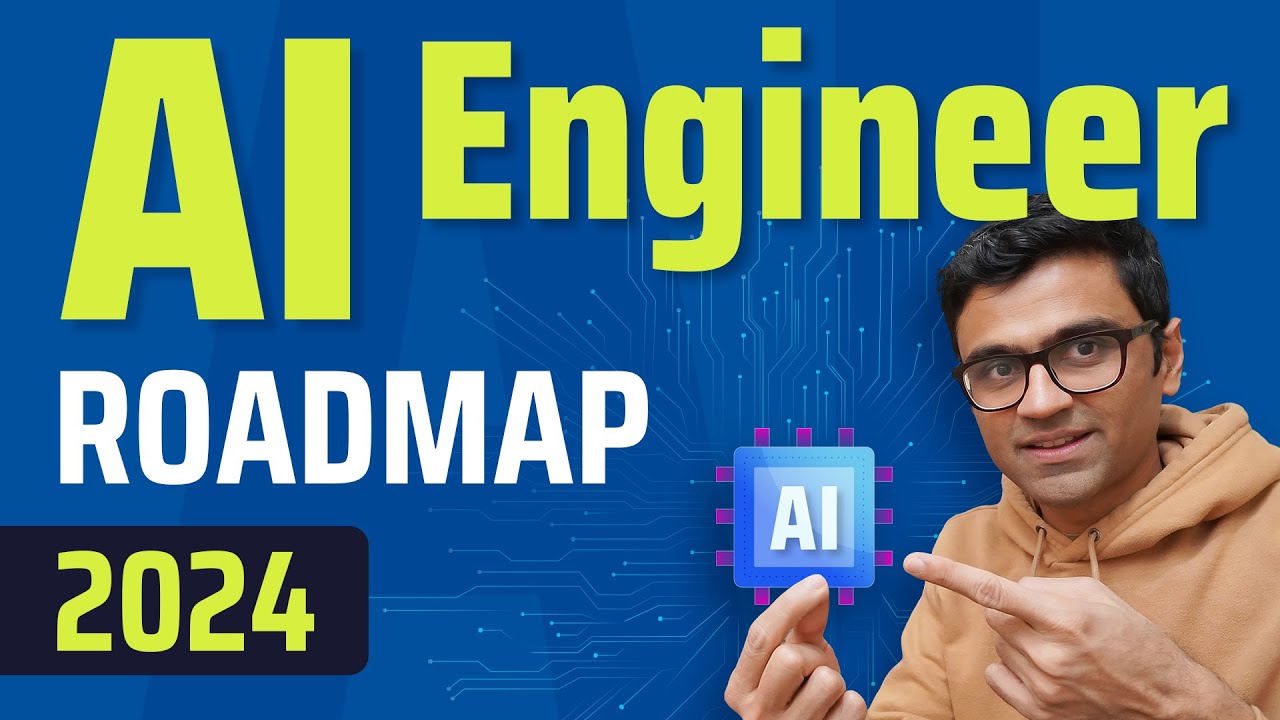The Complete Machine Learning Roadmap
Summary
TLDRTo become a successful machine learning engineer, you must master nine essential skills: Python programming, version control with Git, data structures and algorithms, SQL, and foundational math and statistics. You’ll also need expertise in data preparation, machine learning fundamentals, and advanced topics like deep learning and natural language processing. Additionally, proficiency in deploying models using frameworks like Flask or Django, and tools like Docker, is crucial. With dedicated effort, you can acquire all the necessary skills in 12-20 months and be ready for entry-level machine learning roles.
Takeaways
- 😀 Python is the primary language for machine learning, and it's essential to master it first. While other languages like Java, R, and C++ might be useful for specific roles, focus on Python as a beginner.
- 😀 Git is an important version control tool, used to track code changes and collaborate with others. You only need to learn the basics, which can take 1-2 weeks of practice.
- 😀 Understanding data structures and algorithms is critical for problem-solving and managing data efficiently. It is also a key topic in technical interviews, so dedicate 1-2 months to mastering it.
- 😀 SQL is essential for working with databases and extracting data needed for machine learning models. A basic understanding can be achieved in 1-2 months.
- 😀 Mathematics and statistics (linear algebra, calculus, probability, and statistics) form the foundation of machine learning algorithms. Spend 2-3 months mastering these topics.
- 😀 Data preparation and visualization are crucial skills. Use tools like pandas and numpy for cleaning data, and libraries like matplotlib and seaborn to visualize patterns and trends.
- 😀 Machine learning fundamentals include supervised and unsupervised learning. Learn the key differences and become familiar with tools like TensorFlow, PyTorch, and Scikit-learn.
- 😀 Advanced machine learning topics, such as ensemble learning, deep learning, natural language processing (NLP), and computer vision, are essential for tackling complex problems. Spend 2-3 months on these.
- 😀 Learning to deploy models is important. Use frameworks like Flask and Django to create web services and Docker to package models for easy deployment on any machine.
- 😀 With consistent daily practice (3-5 hours), you can acquire the necessary skills for entry-level machine learning jobs in about 12-20 months.
- 😀 Use supplementary resources, such as PDFs and online tutorials, to help track your progress and fill knowledge gaps as you learn machine learning skills.
Q & A
What is the primary role of a machine learning engineer?
-A machine learning engineer creates models that learn from data to make predictions or decisions. They are responsible for developing, training, and deploying these models effectively.
Why is Python considered the best starting language for machine learning?
-Python is simple, versatile, and has extensive libraries for data analysis, machine learning, and visualization. It’s the most widely used language in the field, making it ideal for beginners.
What is Git, and why is it important for machine learning engineers?
-Git is a version control system used to track code changes and collaborate with others. It’s essential for managing different versions of code and contributing to team projects efficiently.
Why are data structures and algorithms important in machine learning?
-They improve problem-solving and computational efficiency. Understanding them helps engineers manage large datasets, write optimized code, and perform better in technical interviews at major tech companies.
How does SQL contribute to a machine learning engineer’s workflow?
-SQL is used to access, query, and organize data from databases. It helps engineers retrieve and prepare the right datasets for model training and analysis.
Which areas of mathematics are most important for machine learning, and why?
-Linear algebra, calculus, probability, and statistics are crucial because they form the foundation of machine learning algorithms and optimization techniques.
What tools are recommended for data preparation and visualization?
-Python libraries like Pandas and NumPy are used for data manipulation and cleaning, while Matplotlib and Seaborn are ideal for creating clear and informative visualizations.
What are the two main types of machine learning algorithms?
-They are supervised learning, where the model learns from labeled data, and unsupervised learning, where the model finds patterns in unlabeled data.
What advanced machine learning topics should engineers study after mastering the basics?
-Engineers should learn ensemble learning, deep learning, natural language processing (NLP), and computer vision to handle complex tasks and build advanced models.
How can a machine learning engineer deploy their models for real-world use?
-They can use Python frameworks like Flask or Django to build web services, and tools like Docker to package models and dependencies for consistent deployment across environments.
How long does it typically take to become an entry-level machine learning engineer?
-By dedicating 3 to 5 hours daily, one can acquire all essential skills within approximately 12 to 20 months.
What supplementary resources does the speaker mention to support learning?
-The speaker offers a free PDF guide outlining key concepts for each skill and links to tutorials and structured courses available on their website and YouTube channel.
Outlines

This section is available to paid users only. Please upgrade to access this part.
Upgrade NowMindmap

This section is available to paid users only. Please upgrade to access this part.
Upgrade NowKeywords

This section is available to paid users only. Please upgrade to access this part.
Upgrade NowHighlights

This section is available to paid users only. Please upgrade to access this part.
Upgrade NowTranscripts

This section is available to paid users only. Please upgrade to access this part.
Upgrade Now5.0 / 5 (0 votes)





